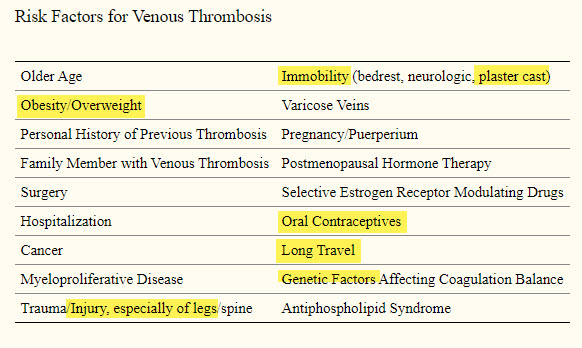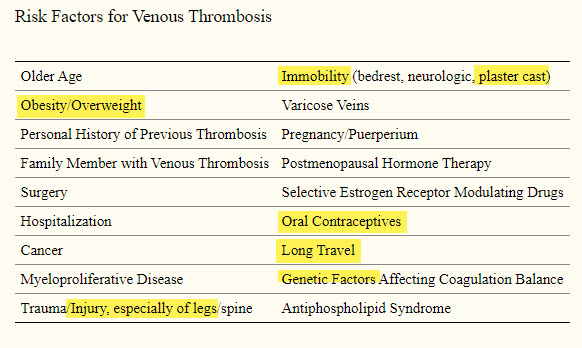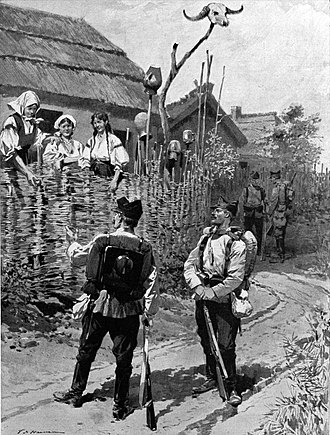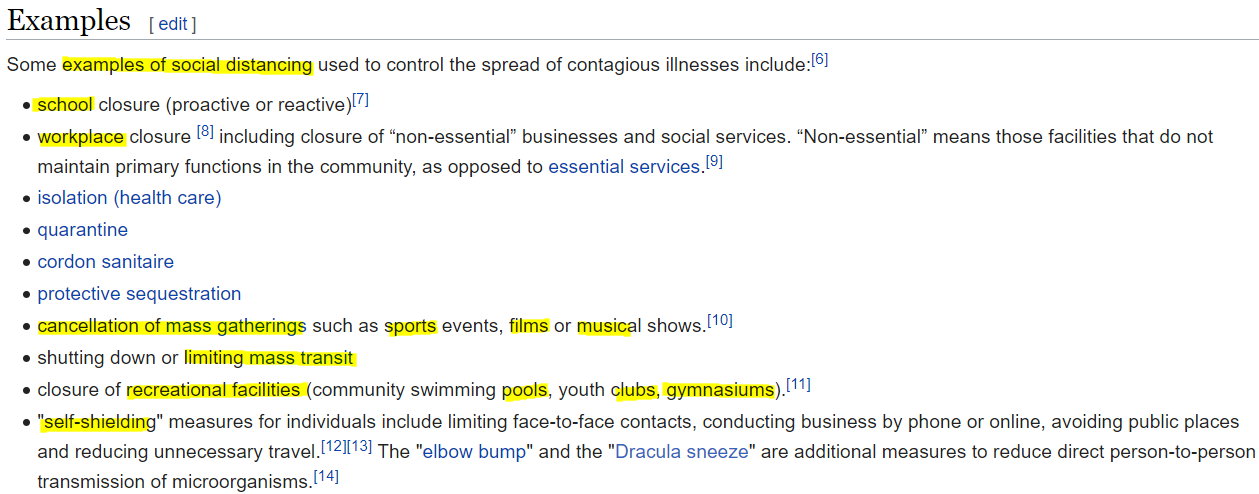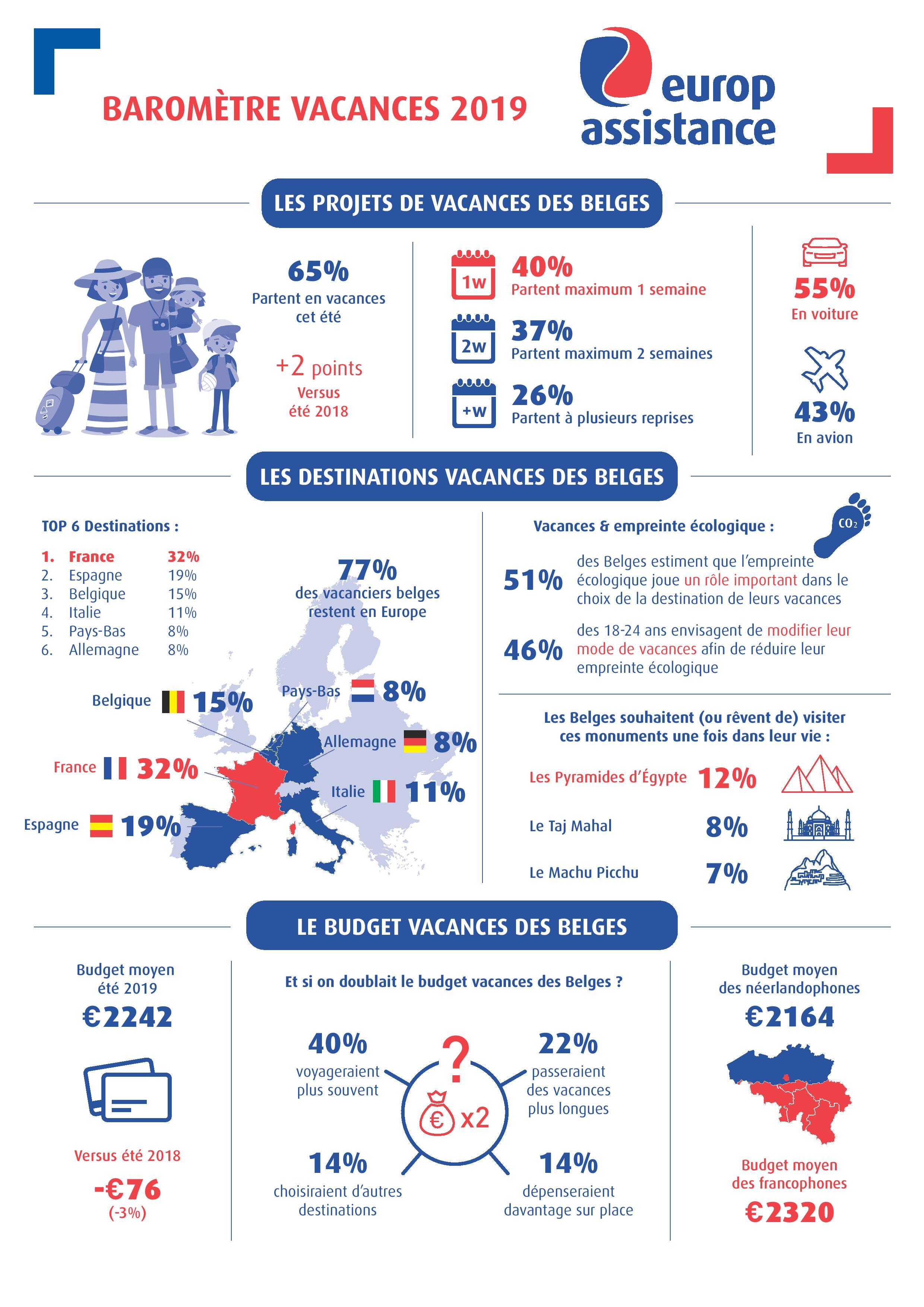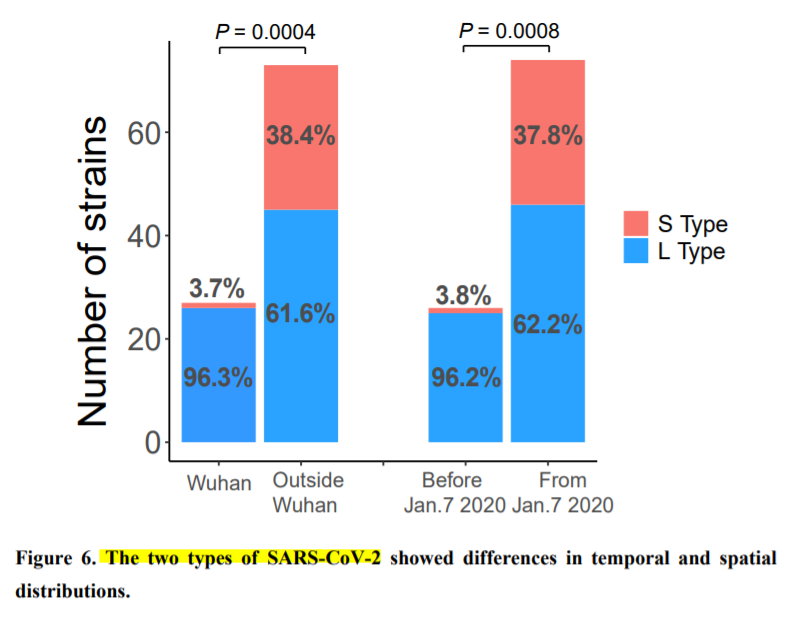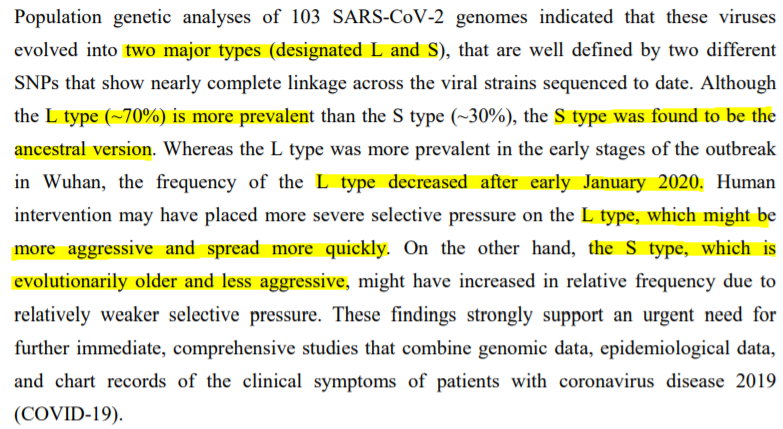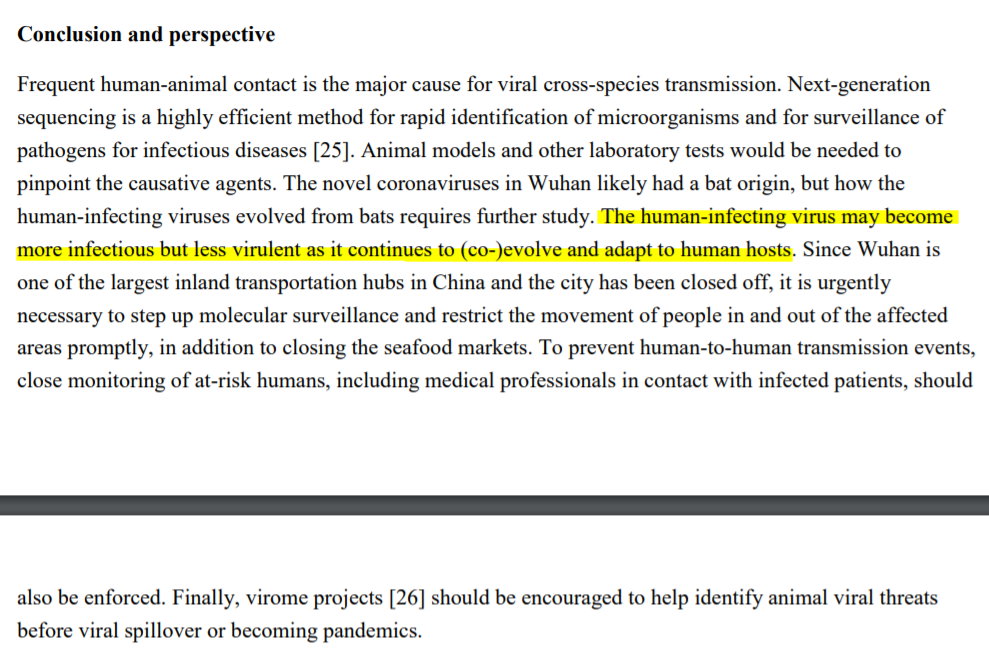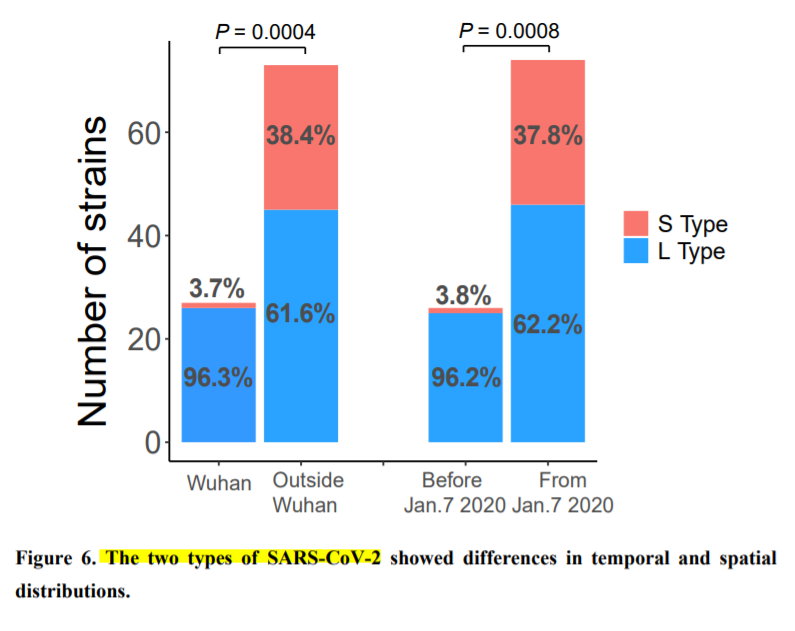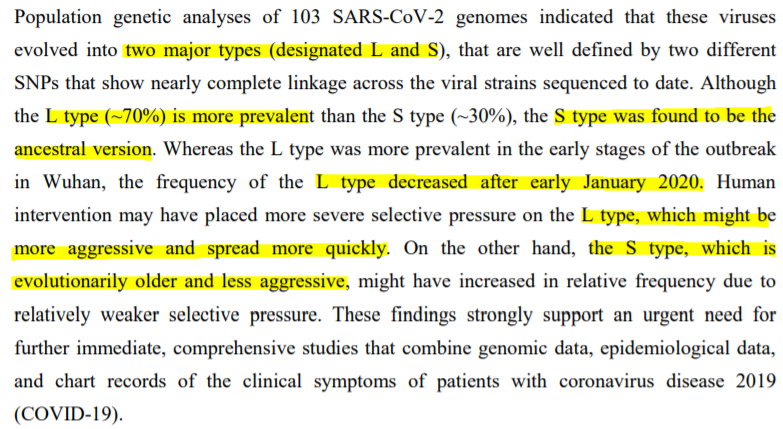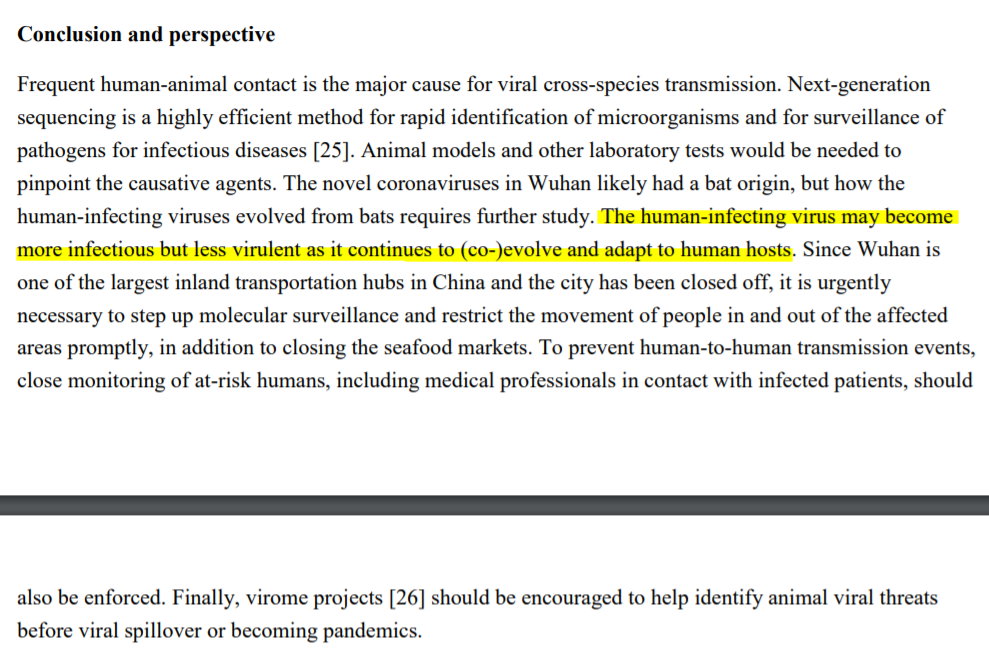Facts & factlets
AstraZeneca ou pas?
(In English down below on this page).
Le grand public n'a pas grand-chose à dire sur la marque de vaccin contre le SRAS-CoV-2 qu'il recevra.
Ceux présentés sont ceux qui sont disponibles.
Bien sûr, on peut décider de ne pas se présenter pour être vacciné.
C'est probablement une erreur car les risques d'être vacciné avec l'un des vaccins disponibles sont bien inférieurs aux risques associés à la maladie COVID-19.
Mais qu'en est-il de la thrombophlébite? Plusieurs pays européens arrêtent d'utiliser le vaccin AstraZeneca. Pas la Belgique. Nous sommes des vrais dûrs.
Qu'en est-il de la thrombophlébite?
C'est une maladie qui arrive assez fréquemment, sans être une personne vaccinée.
C'est une maladie effrayante car elle peut être associée à un caillot qui se forme dans les grosses veines supérieures du membre inférieur. (Les veines fémorales ou iliaques). Le caillot peut se détacher et migrer vers les poumons. cela s'appelle une embolie pulmonaire. Ce n'est pas une bonne chose à avoir.
J'ai une image qui me reste clairement à l'esprit lorsque j'étais assistant aux infirmières il y a longtemps.
Une jeune femme (28 ans) est arrivée à l'urgence très anxieuse, paniquée et disant qu'elle ne pouvait plus respirer. Elle prenait néanmoins de grandes respirations fréquentes. Elle avait plusieurs choses dans son histoire, qui ont rendu un caillot plus probable. Elle ne connaissait pas la plupart de ces derniers. Elle avait un plâtre sur une jambe inférieure. Elle venait de terminer un long voyage dans lequel elle était assise pendant de nombreuses heures dans un avion. Elle était en surpoids. Elle fumait. Elle était du groupe sanguin «A». Elle prenait des contraceptifs oraux.
Des tests rapides aux urgences ont suggéré qu'elle avait une embolie pulmonaire. Une artériographie a été réalisée et elle a confirmé une grande "embolie de selle" bloquant ses deux artères pulmonaires. Elle a été opérée dans l'heure pour cela et a survécu.
Voici un petit résumé des risques de thrombophlébite. J'ai mis en évidence les éléments qui concernent cette jeune femme.
Cela pourrait-il arriver chez une personne qui a été vaccinée?
Oui, bien sûr.
Cela peut également arriver chez une personne qui n'a pas été vaccinée.
La bonne question à poser, et à répondre également, est: quelle est l'incidence de la thrombophlébite dans la population générale?
Réponse: La thrombose veineuse, comprenant la thrombose veineuse profonde (TVP) et l'embolie pulmonaire (EP), survient avec une incidence d'environ 1 pour 1000 par an dans les populations adultes (1). Les taux sont légèrement plus élevés chez les hommes que chez les femmes. Environ les deux tiers des épisodes se manifestent par une TVP et un tiers par une PE avec ou sans TVP.
Cela, ... sans aucun vaccin.
Et avec le vaccin?
Sur la base des preuves disponibles, le taux réel de thrombose dans la population récemment vaccinée est d'environ 22 pour 2.000.000 (1 sur 136.000), ce qui est inférieur au taux de la population générale (présenté juste ci-dessus) et suggère qu'il n'y a pas de lien entre le fait de recevoir cette vaccination et le développement de caillots sanguins.
Fin de discussion. Point à la ligne.
Sauf pour attendre plus de données, car de plus en plus de personnes se font vacciner.
Certains vont bien sûr présenter un caillot sanguin, et ce qu'ils auraient pu faire 2 jours avant d'être vaccinés.
-------
Il reste une autre question
Certains rapports semblent indiquer que le vaccin AstraZeneca est moins efficace pour prévenir l'infection par le SRAS-CoV-2 chez les personnes âgées de 65 ans et plus.
Hé! C'est moi! Je suppose donc que je devrais ignorer mon invitation actuelle et attendre que Pfizer ou Moderna, ou encore mieux, Johnson & Johnson me soit proposé.
--------
Maintenant, cette question a une partie problématique.
Les médias n'attendront évidemment pas une bonne réponse. Ils laisseront échapper toutes les informations effrayantes qui apparaîtront en premier. Ce style vend des trucs pour leurs sponsors.
Lorsqu'on compare l'efficacité des vaccins, il faut revenir aux essais de phase 1, 2, 3 de chaque vaccin.
Celles-ci se sont produites à des moments différents pour chaque vaccin dont le nom est désormais bien connu.
Et alors?
Les vaccins Pfizer et Moderna ont subi des essais d'efficacité avant l'apparition des fameuses «variantes» du virus SARS-CoV-2.
Le vaccin AstraZeneca est actuellement testé (au Brésil par exemple mais aussi en Europe) contre l'une des nouvelles variantes. Celui que vous entendrez peut-être mentionné est "B.1.351".
Et d'un tel processus, il ressort que ce vaccin est moins efficace pour ce variant que pour le virus habituelle.
"Le vaccin AstraZeneca n'est efficace qu'à 65% et encore moins (52%) dans la population âgée."
Alors. Ne vous faites pas vacciner avec ce vaccin. Vrai ou faux?
Faux.
Ce qui manque, c'est plus d'informations. Et qu'on a pas à ce jour. Triste. Tracassant. Mais vrai.
Les vaccins qui ont été développés plus tôt n'ont pas été testés contre des variantes au cours de leurs essais de phase 1, 2 et 3.
On peut donc dire (ou lire): «Le vaccin Pfizer est efficace de 92 à 95% contre le virus».
Mais contre quel virus? L '«ancien» coronavirus, ou les «nouvelles» variantes du coronavirus?
Eh bien, leurs chiffres proviennent des tests contre le coronavirus «ancien» ou habituel.
Si Pfizer se fait tester contre les variantes (et ils le font) tout à fait probable qu'il sortirait avec le même score qu'AstraZeneca.
C'est un point très important à comprendre!
C'est un peu comme demander, comment les chars utilisés pendant la première guerre mondiale ont-ils fonctionné pendant la deuxième guerre mondiale?
Je vous laisse avec cette question pour trouver la réponse.
Ne laissez pas une comparaison injuste vous empêcher de vous faire vacciner.
L'idée que les variantes de ce virus peuvent réussir à réduire l'efficacité de TOUS les vaccins est-elle une idée effrayante?
Je réponds: bien sûr.
Parlez-en avec le prochain virus que vous rencontrez et demandez-lui (ou elle) d'arrêter de faire des variantes.
Alors, que doit faire un vaccinné potentiel?
Obtenez n'importe quel vaccin actuellement offert. Cela inclut AstraZeneca.
Il y a une probabilité plus faible de risque du vaccin que de la maladie COVID-19, surtout si l'on est âgé.
Il protégera contre les maladies graves et mortelles, même si ceux-ci sont elles rares aussi, que chez une personne non-vaccinnée.
Heureusement, ce n'est pas seulement le gouvernement qui travaille sur ce problème.
Ce sont les vrais scientifiques.
Et si à un moment donné, ils annoncent: "Si vous avez reçu le vaccin AstraZeneca, et que vous avez plus de 65 ans, vous avez besoin de notre vaccin spécial de rappel après 6 mois (un booster)."
Eh bien, cela rappelle beaucoup la façon dont les enfants se font vacciner contre certaines maladies. D'abord une pîqure, puis une deuxième et parfois un troisième. Comme un pîqure pour le tétanos.
On devrait avoir un rappel tous les 5 ans.
Alors, quel est le problème?
Ne laissez pas ce que vous entendrez sur les nouvelles engendrer de l'anxiété.
Ne laissez pas les autres ajouter de la confusion et plus de complots.
Faites-vous vacciner avec le vaccin disponible.
J'y vais?
Absolument.
Si je peux me frayer un chemin à travers l'horrible processus en ligne que la Belgique a créé (surtout pour les francophones!) D'ici le 4 avril, je prends rendez-vous, et je vais aller à Malmedy et me faire vacciner pendant mon rendez-vous de 4 minutes, avec 45 minutes de retard si pas plus. À la belge.
C'est bien que ce n'était pas les même qui ont planifié le Jour-J.
Et après votre vaccination. Plus de masque? Pas si vite.
------ Et pour les anglophones ... ------
ENGLISH SPOKEN HERE
The general public has little to say about which brand of SARS-CoV-2 vaccine they will receive.
Those used are those that are available.
Of course, you can decide not to show up to be vaccinated.
This is probably a mistake because the risks of being vaccinated with any of the available vaccines are much lower than the risks associated with the COVID-19 disease. Especially in the elderly and those with other morbidities as you already know.
But what about thrombophlebitis?
Several European countries stop using the AstraZeneca vaccine. Not Belgium.
What about thrombophlebitis?
It is a disease that happens quite frequently, without being vaccinated.
It is a scary disease because it can be associated with a clot that forms in the large upper veins of the lower limb. (The femoral or iliac veins). The clot can break off and travel to the lungs. This is called a pulmonary embolism. It's not a good thing to have.
I have an image that clearly stays with me when I was a Nursing Assistant in the ER at GW in DC a long time ago.
A young woman (28 years old) arrived at the emergency room very anxious, panicked and saying that she could no longer breathe. She was nevertheless obviously still taking deep, frequent breaths. She had several things in her story that made a clot more likely. She did not know most of these. She had a cast on her lower leg. She had just finished a long trip in which she sat for many hours on a plane. She was overweight. She was a smoker. She had type "A" blood. She was taking oral contraceptives.
Rapid tests in the emergency room suggested she had pulmonary embolus. An arteriogram was performed which confirmed a large "saddle embolism" blocking all of one pulmonary artery and much of the other. She was operated on within an hour for this and survived.
Here is a small summary of the risks of thrombophlebitis. I highlighted the elements that concern this young woman.
Could this happen to a person who has been vaccinated?
Yes of course.
It can also happen to a person who has not been vaccinated.
The correct question to ask and also to answer is: what is the incidence of thrombophlebitis in the general population?
Answer: Venous thrombosis, including deep vein thrombosis (DVT) and pulmonary embolism (PE), occurs with an incidence of approximately 1 in 1000 per year in adult populations. The rates are slightly higher for men than for women. About two-thirds of episodes manifest with DVT and one-third with PE with or without DVT.
Those numbers, of course, ... without any vaccine.
And with the vaccine?
Based on the available evidence, the actual rate of thrombosis in the recently vaccinated population is approximately 22 per 2,000,000 (1 in 136,000), which is lower than the rate in the general population (presented just above) and suggests that there is no link between receiving this vaccination and developing blood clots.
End of discussion.
Unless of course, if you're that 1 in 136,000. Just no luck.
------
There is one more question that shows up on the AstraZeneca radar screen.
Some reports seem to indicate that the AstraZeneca vaccine is less effective in preventing infection with SARS-CoV-2 in people aged 65 and over.
Hey wait a minute! I'm in that group! ANd here in Belgium, that's what they said I would be getting!
Yikes! Shakin' in my boots!
So I guess I should ignore my current invite and wait for Pfizer or Moderna to be offered to me instead.
Here, if you turn down your invite, your line just got much, much longer.
--------
Now this question has a problematic part.
The media will obviously not wait for a good response.
They will blurt out any scary information that comes up first. This style sells stuff for their sponsors.
When comparing the effectiveness of vaccines, it is necessary to go back to the Phase 1, 2, 3 trials of each vaccine.
These occurred at different times for each vaccine whose names are now well known.
So what?
The Pfizer and Moderna vaccines underwent efficacy trials before the famous “variants” of the SARS-CoV-2 virus appeared.
The AstraZeneca vaccine is currently being tested (in Brazil, for example, but also in Europe) against several of the new variants. The one you might hear mentioned is "B.1.351".
And from such a process, it appears that this AstraZeneca vaccine is less effective for this variant than for the usual virus.
"The AstraZeneca vaccine is only 65% effective and even less (52%) effective in the elderly population."
That's what they said. Just a day or two ago.
So.
Q: Do not get vaccinated with this vaccine, especially if an old coot. True or false?
A: False.
What is missing is more information. And that we haven't got yet. Sad. Troublesome. But true.
The vaccines that were developed earlier were not tested against variants during their Phase 1, 2, and 3 trials. They were tested against that "good ol' boy" novel coronavirus.
We can therefore say next: "The Pfizer vaccine is 92 to 95% effective against the virus."
But which virus? The “old” coronavirus, or the “new” variants of the coronavirus?
Well, their numbers come from testing for the “old” or usual coronavirus.
If the Pfizer vaccine gets tested against the variants (and it is being so tested) quite likely it would come out with the same score as AstraZeneca. That, or pretty close.
This is a very important point to understand!
It's kind of like asking, how did the tanks used in WW1 perform in WWII?
I leave you with this question to find the answer.
Don't let an unfair comparison stop you from getting the vaccine.
Is the idea that variants of this virus may be successful in reducing the effectiveness of ALL vaccines a scary idea?
Yeah, I guess so.
Talk about it with the next virus you come across and ask him (or her) to stop making variants.
So what should a potential vaccinee do?
Any vaccine currently available: get 3mL in your deltoid, with a smile under your mask.
This includes AstraZeneca.
There is a lower risk from taking the vaccine than from the COVID-19 disease, especially if one is elderly.
It will protect against serious and fatal illnesses, although these are also rare.
Fortunately, it is not just the Belgian government that is working on this problem.
Real scientists are working on this probmel.
What if at some point they announce: "If you have received the AstraZeneca vaccine, and you are over 65, you need our special booster vaccine after 6 months."
Well, it's very reminiscent of how children get vaccinated against certain diseases. First a shot, then a second after a while, and sometimes a third. It's how we do tetanus prophylaxis.
So what's the problem?
Don't let what you say on the news cause anxiety.
Don't let others add confusion and more theoretical conspiracies.
Get vaccinated with the available vaccine.
Will I do this?
Absolutely.
If I can work my way through the horrible online process that Belgium has created (especially for French speakers!) by April 4, I'll make an appointment, and I will go to Malmedy and get vaccinated during my 4 minute appointment, after an hour or so wait time if not more. That's Belgian style. They probably won't even serve a waffle.
It's good that it was not the same crew who planned D-Day. My invitation would have been in German.
Une grande-mère Italienne
E :
Wait a minute.
Didn't a lot of coronavirus come to Belgium (and the world) from Italy?
Aren't scads of Italians dropping like flies now?
Can we trust this Italian Grandma?
She's obviously in that at risk group: elderly.
In a week, will she be infected too? Or worse?
Let's stay balanced in our thoughts.
If you can't go out to have fun, have fun at home.
F :
Attends une minute.
Un grand nombre de coronavirus n'est-il pas venu d'Italie en Belgique (et dans le monde)?
Des tas d'Italiens ne tombent-ils pas comme des mouches maintenant?
Pouvons-nous faire confiance à cette grand-mère italienne?
Elle est évidemment dans ce groupe à risque: les personnes âgées.
Dans une semaine, sera-t-elle également infectée? Ou pire?
Restons équilibrés dans nos pensées.
Si vous ne pouvez pas sortir pour vous amuser, amusez-vous à la maison.
E : Have you even had a chance to look over her C.V. ?
F : Avez-vous même eu l'occasion de regarder son résumé ?
'Social Distancing' - what's that?
E :
From VOX
These three public health tools could (possibly) slow the spread of the outbreak
Beyond the overarching personal message of good personal hygiene (wash your hands, don’t touch your face), there are several other broad public health strategies used to put the brakes on a viral outbreak.
Three of the most important — and sometimes confusing — ones are isolation of sick patients and tracing their contacts, quarantine, and social distancing. These phrases are often used interchangeably, but they refer to slightly different things:
- Isolation is separating those with confirmed infections from other people, so that they can get better without infecting anyone else.
- Quarantine is restricting the movement of, or isolating, people who might have been exposed to an infection but who aren’t yet sick.
- Social distancing refers to a slew of tactics meant to keep people from congregating in large crowds, to slow the spread of a virus.
All of these might be called for during an outbreak, to varying degrees of effectiveness, and result in varying degrees of hardship for individuals. Your state or local government may have the power to enforce adherence to any of these — perhaps even with law enforcement. But we shouldn’t think of these (if implemented properly) as punitive, but as a civic duty to protect the most vulnerable from Covid-19.
Here's one explanation on how to practice 'social distancing'.
The Australian Government Department of Health provides a 13 page and very complete PDF to answer this "What Is?" question.
Santa Clara County Public Health Department provides this information
which includes:
"Some examples of social distancing measures that
would be conducted during a pandemic include:
• Public and private colleges suspending classes,
going to Web-based learning and canceling
all large campus meetings and gatherings.
• Public and private libraries modifying their
operations and restricting people from gathering
by allowing people to come in only to pick up
materials that have been reserved or requested
on-line or by telephone.
• Business changing company practices, setting
up flexible shift plans, having employees
telecommute and canceling any large meetings
or conferences.
Other social distancing measures that would be used
during a pandemic include closing all public and
private K-12 schools and facilities, closing all childcare
centers, community centers, malls and theaters, as
well as suspending services at all houses of worship.
Additionally, during a pandemic all indoor and
outdoor events that attract large crowds would be
cancelled. These events include sports events,
concerts, parades and festivals. Mass transit systems
may also be temporarily closed or be used only for
essential travel."
Q: What is a cordon sanitaire?
Ans. : The term cordon sanitaire dates to 1821, when the Duke de Richelieu deployed French troops to the border between France and Spain, allegedly to prevent yellow fever from spreading into France.
Maybe other things were spreading into France as well ...
It is the restriction of movement of people into or out of a defined geographic area, such as a community, region, or country. The term originally denoted a barrier used to stop the spread of infectious diseases.
Wikipedia provides a typically informative summary of social distancing.
- ( Click image below to read more easily ) -
What about effectiveness of these measures. Do they make a difference?
- "Research indicates that measures must be applied rigorously and immediately in order to be effective.
- During the 1918 flu pandemic, authorities in the US implemented school closures, bans on public gatherings, and other social distancing interventions in Philadelphia and in St. Louis, but in Philadelphia the delay of five days in initiating these measures allowed transmission rates to double three to five times, whereas a more immediate response in St. Louis was significant in reducing transmission there.
- Bootsma and Ferguson analyzed social distancing interventions in 16 US cities during the 1918 epidemic and found that time-limited interventions reduced total mortality only moderately (perhaps 10–30%), and that the impact was often very limited because the interventions were introduced too late and lifted too early. It was observed that several cities experienced a second epidemic peak after social distancing controls were lifted, because susceptible individuals who had been protected were now exposed."
Q: Does everyone think that social distancing is a good thing in times of epidemic?
A: No. Not always.
While it may be good at an individual level, at a population level, it may have negative consequences.
"Rational individual-level preventive measures [like social distancing] can have counterintuitive consequences for the population level. Public health interventions that aim at changing individual behaviour through social distancing could have adverse consequences, for example, school closures could reduce social contacts between children in the school classes but may (partly) be replaced by social contacts outside of school. But similarly, these measures could be beneficial for the population. As our results show, it is not necessarily straightforward what effects such behaviour may have at the population level, where much may depend on the disease and population under consideration. These findings highlight the importance of understanding the properties of disease specific contact networks and modelling individual-level behavioural changes in response to an epidemic to understand infectious disease dynamics."
The above from :
"Individual preventive social distancing during an epidemic may have negative population-level outcomes" by Ka Yin Leung, Frank Ball, David Sirl and Tom Britton from Sweden and the UK
Click the link to read this very in depth and thoughtful analysis.
Les Belges en vacances
Tout ces Belges en vacances. Où vont-ils?
Subitement, le COVID-19 donne un autre ton à la question
L'Europe d'abord
La destination la plus populaire reste Chypre (38 %) suivie très vite par les destinations de plage classiques (37 %). 22 % de nos sondés recherchent le calme de la nature tandis que 21 % préfèrent un circuit en voiture. 20 % des vacanciers restent loin des côtes et préfèrent explorer l'intérieur du pays. Seuls 16 % optent pour des vacances culturelles.
En termes de destinations de vacances, le Belge reste principalement en Europe (91 %). 3 % d'entre eux partent en Amérique du Nord et 3 % en Asie. En Europe, c'est la France qui occupe la première place avec 57 %, suivie de l'Espagne avec 28 %, les Pays-Bas (27 %), l'Allemagne (21 %) et l'Italie (18 %). Comme cité plus haut, la Turquie n'obtient que 3 %. La Grèce qui score à 4 % seulement a, elle aussi, beaucoup perdu de sa popularité.
Chaque année, 730.000 Belges vont au moins une fois par an aux sports d'hiver.
de Vacance Web
La France (47%), l'Autriche (24%) et la Suisse (10%) sont les destinations favorites des skieurs belges, selon une étude de LHM Conseil, menée pour Savoie Mont Blanc Tourisme et plusieurs stations de ski savoyardes. La région d'Anvers représente 21% des parts de marché pour les sports d'hiver.
Les Wallons choisissent surtout la France (81%) pour aller aux sports d'hiver. Les Flamands optent plutôt pour l'Autriche ou l'Allemagne tandis que les Brabançons ont une préférence pour la Suisse ou des destinations plus "exotiques" comme l'Europe de l'est ou la Scandinavie. Pour 70% des francophones, la destination Savoie Mont Blanc est celle qui est la plus associée au ski et aux sports d'hiver contre 26% pour les néerlandophones qui considèrent à 61% que le Tyrol répond le mieux à ces critères.
"Lorsqu'ils se rendent aux sports d'hiver, 45% des Belges voyagent en grande tribu ou groupe (5,9 personnes en moyenne). Les francophones voyagent plus facilement avec leurs enfants, notamment jeunes, et donc plus souvent en période de vacances scolaires, spécialement en février. Les néerlandophones voyagent davantage avec leurs grands enfants ou en janvier. Par conséquent, la France est plus fréquentée par la clientèle belge durant les vacances de Carnaval et l'Autriche en janvier", explique Savoie Mont Blanc Tourisme.
Et voici une mise-à-jour de ces données de vacances préférées en 2019.
- cliquez pour agrandir si besoin -
Faut-il planifier ses vacances en fonction du virus le plus répandu dans un pays?
Probablement pas!
Le ou les COVID-19(s)
E:
(En français, un peu plus bas sur cette page) ...
As though it wasn't already enough to be asked to remember what COVID-19 means, how about this?
"The" COVID-19 virus infecting people in Wuhan and surrounding areas of China, is probably not one virus, but two. More acurately, two different strains of COVID-19 exist. Chinese researchers have named these "L" and "S" strains. They are genetically different enough when studied (17%), that their behavior is also likely to be different. And it is.
The "S" strain (30%) is probably the older or ancestral form of the other. It tends to be less aggressive than the "L" type. The "L" type is more prevalent (70%) and was more aggressive clinically in the early stages of the Wuhan outbreak.
There are of course several different viruses in the family of coronaviruses. Several like SARS or MERS coronavirus tend to be more lethal than COVID-19. More explanation may not add much for our purposes here.
An interesting point is that two virus particles that infect the same person, may make viral babies in the host that recombine their genetic material. In this case RNA, and not DNA. Then you have a different virus when baby grows up, with potentially significant genetic differences from either "parent." Some may understang this as "mutation," but recombination is probably more accurate, and occuuring more often than a true mutation. Take that as an almost semantic detail. This also implies the potential for different clinical behavior and level of aggressiveness. That's what was found in China, and recently realized and confirmed.
From the viruses perspective, too much aggressiveness may be counter-productive.
If its human host gets too sick and dies, it may wind up out in the street, looking for a new home. Perhaps a bat, camel, or whale where available. So the viruses change their genetic material very carefully, they are politically conservative if you will, as they adapt to their host (us).
Isn't virology fascinating?
Here are the articles, in English, and recently published, that provided this information.
F:
Comme si ce n'était pas déjà assez
... de falloir se rappeler ce que signifie COVID-19, encore quoi d'autre?
"Le" virus COVID-19 infectant les habitants de Wuhan et des régions avoisinantes de la Chine n'est probablement pas un virus, mais deux. Plus précisément, il existe deux souches différentes de COVID-19. ("Strains" an anglais = souches). Des chercheurs chinois ont nommé ces souches "L" et "S". Ils sont suffisamment différents génétiquement lorsqu'ils sont étudiés (17%), que leur comportement est également susceptible d'être différent. Et il est différent.
La souche "S" (30%) est probablement la forme la plus ancienne ou ancestrale des deux. Il a tendance à être moins agressif que le type "L". Le type "L" est plus répandu (70%) et était plus agressif cliniquement dans les premiers stades de l'épidémie de Wuhan. Puis s'est calmé.
Il existe bien sûr plusieurs virus différents dans la famille des coronavirus. Celles-ci sont résumées en détail dans les articles liés. Plusieurs comme le coronavirus du SRAS ou du MERS ont tendance a être plus mortels que le COVID-19. Plus d'explications peuvent ne pas ajouter grand-chose à nos fins ici.
Un point intéressant (pour moi) est que deux particules virales qui infectent la même personne, peuvent faire des bébés viraux chez l'hôte qui recombinent leur matériel génétique. Dans ce cas, l'ARN, et non l'ADN. Ensuite, vous avez un virus différent lorsque bébé grandit, avec des différences génétiques potentiellement importantes de l'un ou l'autre «parent». Certains peuvent comprendre cela comme une «mutation», mais la recombinaison est probablement plus précise et se produit plus souvent qu'une vraie mutation. Prenez cela comme un détail presque sémantique. Cela implique également la possibilité d'un comportement clinique et d'un niveau d'agressivité différents. C'est ce qui a été trouvé en Chine, et récemment réalisé et confirmé.
Du point de vue des virus, trop d'agressivité peut être contre-productive.
Si son hôte humain tombe trop malade et meurt, il peut se retrouver dans la rue à la recherche d'un nouveau domicile. Peut-être une chauve-souris, un chameau ou une baleine, le cas échéant. Les virus modifient donc leur matériel génétique très soigneusement, ils sont politiquement conservateurs si vous voulez, car ils s'adaptent très soigneusement à leur hôte (nous).
La virologie n'est-elle pas fascinante?
Voici les articles, en anglais et récemment publiés, qui ont fourni ces informations.
Attention, le principal obstacle linguistique ici, n'est peut-être pas l'anglais, mais les termes de la science de la virologie et de la génétique moléculaire.
<<<<<<<<<< vite, vers l'Accueil

